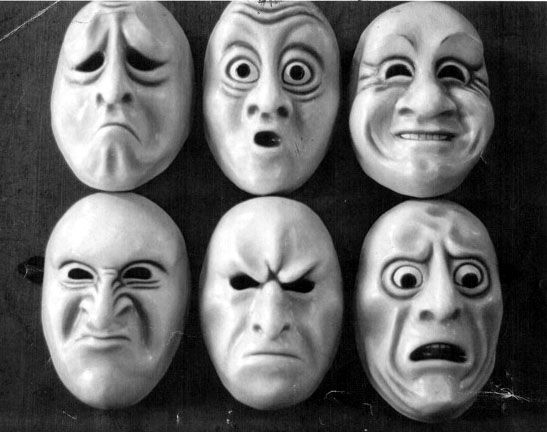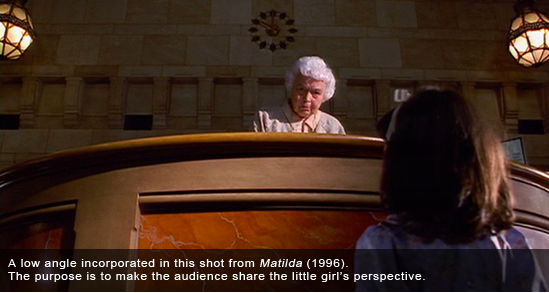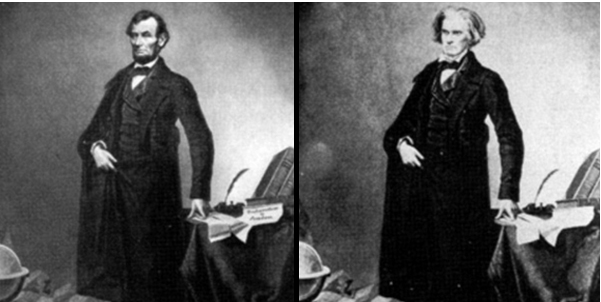
Guiding Questions for Emotion:

Mother to Sun
by Langston Hughes
Well, son, I'll tell you:
Life for me ain't been no crystal stair.
It's had tacks in it,
And splinters,
And boards torn up,
And places with no carpet on the floor --
Bare.
But all the time
I'se been a-climbin' on,
And reachin' landin's,
And turnin' corners,
And sometimes goin' in the dark
Where there ain't been no light.
So boy, don't you turn back.
Don't you set down on the steps
'Cause you finds it's kinder hard.
Don't you fall now --
For I'se still goin', honey,
I'se still climbin',
And life for me ain't been no crystal stair.
This poem by Langston Hughes demonstrates a mother advising her son because at the time racism was widespread, she compares life to a staircase with high and low steps but you have to climb and keep fighting in order to reach the top. She then informs her son about how this is what she is doing at the moment fighting and climbing these stairs in order to protect her family and keep them safe. The author uses a poem to convey the emotion and impact to the people in a way that they would feel what he felt. This is an example for TOK because it demonstrates a way in which emotion can be expressed and the author uses his culture too to reflect on the raicial issues during his time which made the readers feel the emotion themselves.
-Talah

This picture demonstrates the universal expressions including happiness, sadness, disgust, shock, anger, and fear. These Emotions are accepted on a universal base meaning that everyone is able to understand them and communicate with them. This relates to TOK as it enforces the James-Lange theory which states the importance of the physical aspects of our body (facial expressions) that aid in communicating with one another, thus through this interpretation one would realize the influence of a simple facial expression on another persons interpretation.
-Talah

 Spirited Away is one of the most successful films in Japanese history. It tells the story of a girl who accidentally gets trapped in the spirit world where she tries to find a way to escape with her parents. In terms of emotion, this film depicts two major ideas. The first is the bond between childern and their parents, which is shows the spectator multiple emotional states of the protagonist. (Fear and sadness are shown when she realizes she is trapped and has lost her parents.) The second idea is the disregard of emotion people have. In the movie, Sen encounters a "stink spirit", which she helps, however it turns out the the spirit was a river spirit in which its river was polluted by people. In this instance, we can see that the aesthetics people differ. In Sen's case, she was disgusted, but sympathized with the spirit and helped it, whereas people in general had harmed the spirit without giving it any thought.
Spirited Away is one of the most successful films in Japanese history. It tells the story of a girl who accidentally gets trapped in the spirit world where she tries to find a way to escape with her parents. In terms of emotion, this film depicts two major ideas. The first is the bond between childern and their parents, which is shows the spectator multiple emotional states of the protagonist. (Fear and sadness are shown when she realizes she is trapped and has lost her parents.) The second idea is the disregard of emotion people have. In the movie, Sen encounters a "stink spirit", which she helps, however it turns out the the spirit was a river spirit in which its river was polluted by people. In this instance, we can see that the aesthetics people differ. In Sen's case, she was disgusted, but sympathized with the spirit and helped it, whereas people in general had harmed the spirit without giving it any thought.
--Chris Morcom


Hachi: A dog's tale is a movie that illustrates the relationship between a man and his dog. Although many people would not think of such a relationship evoking emotions within the audience, in reality it does. The story displays the undying loyalty the dog Hachi has for his owner, and with his owners death the dog waits for him to come everyday in the same spot for 60 years. The dog doesn't move despite the weather and lack of food. This movie evokes strong emotions within the reader mainly due to the shared knowledge that animals lack emotions, however as this idea is contradicted by the movie the viewers grow a somewhat new understanding and connection towards the dog. Additionally, the readers reasons plays a role in the way their emotions are affected, the viewers know through reason that the dog doesn't understand that the man is dead which causes them to sympathize more for the "innocent" ( lacking the knowledge) character thus developing stronger emotions
- Beyza Tasoglu
How to Get Away with Murder
The tv show "How to Get Away with Murder" by Peter Nowalk talks about a professor of defense law called Annalise Keating who teaches a class called "How to Get Away with Murder". This professor bases her whole teaching on the idea that "you don't ask for the truth, you pound it out of [the suspects]". When Annalise Keating goes to court to defend her client, she does not think whether her client actually did commit the crime, she rather just tends to defend him/her: she does not allow her emotions interfere with her work. This is directly linked to TOK as emotion as a way of knowing does not always interfere with our reasoning, even though in some cases like this, our reasoning could be less reliable than our human emotions.
-Leen Kayali
Inside Out is a film that portrays the emotions of an 11 year old girl (Riley). The emotions that are shown to influence the main characters actions are: Joy, Sadness, Disgust, Anger and Fear. These emotions not only influence how she acts, but also the memories she makes. The memories that Riley makes are always associated to an emotion, and as she grows older, the memories can associated to more than one emotion. Riley's emotions also influence the core memories that she has, which are the basis of her personality. In the TOK perspective, this film is valuable in showing the correlation between emotions and our intuition. The film also shows how our memories are associated to our emotions, which can make it easier or harder for us to remember things.
Maha
Noor Aldelamy:
The above political cartoon relates to how technology has limited our perception to recognize cognitive emotions beyond the basic facial expressions that are often used on an everyday basis, or even emojis. Therefore, the lack of the ability to identify more complex emotions that are communicated either physically or by other means, greatly limits the amount of knowledge received by a knower. This leads one to believe that emotions is thus a vital element of obtaining knowledge, and can relate to both the 1st knowledge question of the prescribed titles for May 2016 ("In gaining knowledge, each area of knowledge uses a network of ways of knowing").
There are images in this world that may bring out certain emotions in the individual. In the case of this image, the spectator is gaining an emotional sympathy for this boy in the middle. He is surrounded by guns and yet the expression in his face is telling the spectator that he has no fear, instead it is telling the viewer that he is remaining strong and standing up for what he believes is right. Our emotions allow us to create story, they allow us to see and feel things that we may not have been aware of until that moment. This is often the artist's intentions, to leave the interpretation open for the indicidual spectator.
-Pauline

The above depiction illustrates how emotions felt by humans affect more than just the brain or general mental state- it extends to affecting the body as well, with some more potent than others. Bodily sensations may be felt with certain emotions, such as love, which seems to be concentrated with the upper body just as much as the brain. The quantities of central activity have been rudimentarily represented above, indicating that certain feelings can be felt by brain in a way that could be compared to how senses are felt by the brain as well. More specifically, love indicates more central activity throughout the body (excluding legs), and thus powerful emotions may be related to ways of knowing such as sense perception. Depression, on the other hand, juxtaposes love as it reveals a loss of sensations throughout the body, and therefore a negative correlation with sense perception is created.

This photograph, of a photographer, reveals the man’s passion for his job/hobby. The immensity of his passion forced him to continue to take pictures, even though his shoes were on fire. The photograph shows how a person’s passion for something, could force him to go to lengths to achieve his goals and aspirations. In TOK terms, this form of passion is referred to as emotional energy, which forces people to not give up and pursue what they want to achieve. Therefore, this photograph exemplifies Thomas Edison's quote: “Genius is one percent inspiration and ninety-nine percent perspiration”. Hence, this can further describe how emotions does not restrict you from achieving something, but on the contrary drives you towards it.
- Haya AlAggad


 This photograph evoked a lot of emotion online, and went viral. It shows a refugee boy who was washed ashore after trying to flee with his family. This photo evoked a lot of emotions, as people were saddened to see such a young boy in such a situation. Emotions can be used as a source of knowledge to tell us as a society that was is happening to these innocent refugee children is unacceptable, and should not be accepted. In this case, intuition and emotion play a role in demonstrating a powerful message that is conveyed by this image.
This photograph evoked a lot of emotion online, and went viral. It shows a refugee boy who was washed ashore after trying to flee with his family. This photo evoked a lot of emotions, as people were saddened to see such a young boy in such a situation. Emotions can be used as a source of knowledge to tell us as a society that was is happening to these innocent refugee children is unacceptable, and should not be accepted. In this case, intuition and emotion play a role in demonstrating a powerful message that is conveyed by this image.
-bibo tabbara

This cover page of Time Magazine shows the shadow of the eiffel tower on top of the main headlines of the magazine such as "ISIS will strike America" and "How to Beat them" and "the linear terror". These headlines are what are spread across the main websites and the main magazines across the world. The emotional aspect of this is that it has created a constant fear around us all. The paradox in this situation is that I personally would claim that I feel safer in Saudi Arabia than I would in either France or Denmark (where I am from). This is due to my emotions and my instinct telling me that I am safer here than I would be in Europe at the moment. This constant confrontation with the reality of the world today allows us to develop emotions on these different topics, in this case the Islamic State and their continuous strikes against humanity. -Pauline


Despite the faint smile on the girls face, this picture evokes nothing related to happiness or positivity. This is a picture of a little girl who is working in harsh environments in Pakistan. As seen in the picture, the girl seem's to be collecting the garbage surrounding her, with another child working behind her. Child labor is a significant problem around the world, especially in LEDC's. The fact that a young girl is working in an area filled with garbage, especially with a smile on her face, rather than going to school or enjoying her childhood evokes both guilt and sadness within the audience. The degree of emotions the viewers feels adds on to the reality sensed and strenghtens the urge for action to combat problems such as child labor.
- Beyza Tasoglu

This image is a snapshot of British artist Banksy's work before it was defaced and obscured. This graffiti painting evokes numerous emotions of sadness and pity in the minds of the viewer as well as a sense of realization. It portrays a little girl holding onto her balloon which forms part of a slogan "No Future". In relation to TOK, this image shows how emotion can be used a way of knowing since it brings about a realization of the doomed future some children have for simply being born into poverty and the hopelessness that they feel. -Ali B.
This image stirs deep emotions within the viewers as they start and realize what truly happened to Syrian refugees, specifically to little children. This image illustrates a little boy crying while sitting in his own, which makes the viewers' emotions affected, as they would feel bad for such a little child. Though there is no language associated with this poem, the illustration clearly conveys what is was meant to be conveyed, which could also be a form of art, as the image fits under the intention criteria, where an anesthetic response in the viewers is evoked. More importantly, the sad emotions usually associated with this image, reaches a wide range of audience, even though some people may be against the Syrian revolution. In this case, there is reason associated with the emotions that are evoked, as the viewers would reason in their minds what could possibly happen to such people when they are placed in hard conditions.
-Leen Kayali

http://www.dailymail.co.uk/femail/article-3330471/Would-money-didn-t-need-Man-walks-round-New-York-suit-covered-cash-telling-strangers-needed-disheartening-results.html
This article, discusses how a man wore a jacket with money on it and held a sign in the middle of the street saying take what you need. This man then tells us how those who didn't need the money (average everyday people) were passing by and taking a lot of money and being greedy, whereas a homeless man refused to take more than $2 for his lunch. In TOK terms, this article demonstrates that emotions often cloud people's judgment and cause irrational behavior. Those who didn't need the money, yet still tok it can be considered greedy, and are often broken by temtptation.
bibo tabbara

When people see this picture, it is as if their heart melts because the dog is so cute. If this dog was up for adoption, the emotions of people might sometimes interfere with their reasoning. Even though the person is not ready to adopt a dog, they would because of the feelings they got looking at this dog and how happy it made them feel. Alissar Abdin


Camera angles a very important aspect of filming. Camera angles affect the way viewers perceive the situation or the character. In the first picture, the high angle is used in order to make the girl seem weak or frightened. This evokes an emotion of feeling pity for the child. On the other hand, the low angle is used in order to make the character look dominant. This evokes a feeling of fright. Emotion is a reliable way of knowing because in the case of movies, the smallest details are magnified in order to evoke a certain emotion from the viewers, so there is a reason the directors are filming from that angle because they want the viewers to feel a specific emotion. Alissar Abdin
This image shows Myleene Klass visiting the a poor village in the Philippines, where she meets a mother and her child. This image touches on emotion because through imagination,one can put himself in the place of any of the people in the above picture, and imagine what it would be like to live in such conditions, or to even see and help people living in such conditions. Moreover, this shows the universal power of emotion, and how people of two different countries and cultures can experience similar emotions regardless of individual experience, such as compassion.
-bibo tabbara

On the left, there is a photo of President Abraham Lincoln, he looks powerful and is standing like a hero. In reality, this photo was created by an unknown forget. The body and the surrounding background of the image is a portrait from a Southern leader, John Calhoun (on the right), while the head was from an existing photograph of Lincoln. People think this was done because there weren't many powerful looking photos for Lincoln when he lived. The emotion evoked when seeing the picture on the right makes the viewers feel like Lincoln was a very powerful and a hero like figure, the emotion affected the viewers reasoning as well as how one sees things.
Noor Aldelamy:
The lyrics to Adele's "Someone Like You" intertwine both memory and emotion to create a sensation known as nostalgia. Powerful emotions can trigger certain memories (and thus is a method to acquire knowledge). Yet nostalgia itself (a form of feeling sentimental about the past) may only occur when a memory that is suddenly brought to the present is linked with a powerful memory, such as love, to create a sense of longing (which is what Adele attempts to fight in her song). Thus, associating emotion with a way of knowing such as memory may create its own sensation (nostalgia) that is considered commonplace within humanity, and is therefore able to allow knowledge to resurface within one's mind.
“Afire Love” by Ed Sheeran is a song written by the artist himself about his grandfather. Ed’s grandfather had struggled with Alzheimer's disease for about 20 years. The song illustrates the artist’s personal emotions towards his grandfather, while describing the love that his grandparents shared before his grandfather lost his memory. This song was reportedly written during the time of the grandfather’s death, thereby making the song a tribute to the man, as well as a form to express the artist’s emotions. In TOK terms, this song represents a form of primary emotion that is developed through the love of a family member. One can discuss this example in terms of James-Lange theory that “suggests a mechanism through which one can come to know and empathize with other people's feelings” (Lagemaat). Hence, while listening to the song, one can both appreciate the music but more importantly understand the artist’s sorrow. This example can also be used as an example of memory and art; the artist describes his recollection of his grandfather in an artistic way. That being said, this can support a claim about the communication of emotions through art as well as the impact of memory on emotion.
-Haya AlAggad
This video is basically a voice recording of a child reciting a poem that he wrote. The video includes a combination of a sad melody, pictures, and the child’s innocent and sorrowful voice. The poem describes the Palestinian perspective on the injustice going on in Palestine. In terms of TOK, this can be used to describe how certain emotions, such as sorrow, of one person can affect that of another person. Using this video one can discuss James-Lange’s theory that “suggests a mechanism through which one can come to know and empathize with other people's feelings” (Lagemaat), as listeners often feel compassionate with the child. At the same time, this video can explain how people with diverse cultures or backgrounds can react differently to this poem, as the topic of Palestine vs. Israel is a controversial one.
- Haya AlAggad
In this video, a man conducts a "social experiment" on four men; two on the upper side of the economy, and two on the lower. He pretends to be blind and asks the four men if the lottery he has is a "winner", even though he knows that it is. The two who is viewed to be economically stable, has lied to the blind man and took the lottery to claim it as their own. While, the two who were on the lower side of the economy, have been honest, and helped the blind man. In TOK terms, we can look at how emotions influence our decisions, since some people believed it to be immoral to lie to a blind guy. This is also related to ethics, since the rich and the poor had different morals. We can also argue that people with disability should be treated differently, because we automatically feel pity for them. -AlAnoud AlHamdy
The Video is a TED talk which goes over the power of empathy and how it is useful in understanding others and how we look at the world using our emotions. The video and the examples provided in the video can be used as examples in support of empathy and speak of the ways in which emotion is a way of knowing. Moreover, the video provides examples of empathy and its use in human sciences and how we can understand people (eg. psychology) through empathy. Or of how the natural sciences show how empathy is essential to human development. However, empathy mostly goes under the WOK of emotion (and maybe imagination since it is imagining about how others feel) and that should be the focus.
Also here is another video that speaks about empathy that may be useful: https://vimeo.com/81492863
The Power of Empathy. Perf. Helen Reiss. YouTube. TEDx, 12 Dec. 2013. Web. 24 Nov. 2015.
http://www.vevo.com/watch/sia/breathe-me/GB0700400017
Breathe me by Sia is a song that is associated with sadness, and the loss of oneself. This song is often played throughout movies where characters are battling with an inner struggle. In terms of TOK, this song uses memory and emotion because it evokes memories, and reminds people of their past struggles and mistakes, and these struggles are what cause such deep emotion to be evoked once heard. It is played during sad parts of movies because it universally evokes such an emotional response from the audience, and this is often the same effect movies try to create during sadder scenes.
-Bibo Tabbara
https://www.ted.com/talks/melissa_fleming_a_boat_carrying_500_refugees_sunk_at_sea_the_story_of_two_survivors
This TED talk by Melissa Fleming is very touching because it tells the story of Syrian refugees who drowned during their attempt to flee, and reach Europe. Fleming tells the story of one woman who was able to survive, and had to watch everyone that was with her on the boat including her fiancee die before her eyes. In terms of TOK, this video/talk evokes so much emotion because it considers a very sensitive and current topic that is the refugee crisis. Additionally, when listening to this talk, the audience subconsciously themselves in the place of this woman, and feels what it is like to be in such a situation, therefore allowing for this talk to be so powerful and inspiring. As a WOK, our emotion tells us that what is happening to these refugees is ethically wrong, and should be stopped. This can create emotional energy which can provide the energy to engage us in finding a solution for such a problem.
-Bibo Tabbara
This video is a perfect example of the innocence of youth and how sometimes are lack of understanding of events may hinder us from feeling sadness or fear. The emotions here of this child is the fact that these people are “really really mean” and they “have guns” that can ruin their homes. The beauty in this video however, is the emotions between the father and the sun when the father says that the “candles and flowers” are to fight against the guns, as a protection. Although us adults are aware that these may not physically save us from what may come, the strength of community may be enough to stand up against these acts of terror. What is also striking in this video is the different emotions it shows. Fear of the evil, then the acknowledgement of what remains beautiful and valuable, such as, parent’s love and care for their children and the will to protect them and lastly, an even greater love for the society we live in. (You, Me, Community). -Pauline
https://www.youtube.com/watch?v=EHAuGA7gqFU
This short movie named 2+2=5 seems to be inspired by George Orwells novel 1984. In the short movie a teacher tells the students that 2+2=5, however one boy refuses to accepts this. The boys opposition against his authority angers the man, thereby causing him to have the boy killed in front of his classmates. This short movie demonstrates the society and the "sheep" that follow a set of rules put forth by an authority figure without questioning it. Throughout the movie, the audience goes through different emotions. First, when the teacher claims that 2+2=5 the audience is at an awe and anticipates the motive and reason behind it. With the boys opposition, fear develops, and finally when the boy dies a sense of sadness and shock takes over. With the play of emotion, the underlying message is also recognized by the audience- the message of a self realization. This movie in all raises the question of "to what extent are emotions universal?" and "to what extent does reason play a role in emotion?". As an audience, it is common knowledge that 2+2=4, however when a contradicting idea is introduced, it affects the outcome significantly, thus tampering with emotions.
-Beyza Tasoglu
PETA tries to send their message through the use of rationalisation. They guide their audience to stop abusing or exploiting animals in the video by guilt tripping the viewers into believing that being silent is a part of the crime. PETA uses influential slogans such as, “a rat is a dog is a boy”. This can be related to reasoning, because PETA uses inductive reasoning that may be seen as a fact, but likes truth in it. To relate it to emotions, through strong passion PETA’s reasoning is somewhat bias and lacks “truth” in it (rationalisation). Moreover, PETA aims at the viewer’s emotions, by mention that animals, too, can feel. Therefore, it is wrong to exploit them (inductive reasoning). This leads to the area of knowledge ethics, where the organization and viewers may have different morals, some may view abusing animals as the norms and thus be stoic towards this video, while some may show sympathy and avoid being silent to this abuse. -AlAnoud AlHamdy
In this film created by Walt Disney portrays the qualities of reason and emotion in a humorous way. Where both reason and emotion are presented as character's in people's brain. This animation creates the character of reason to be boring, strict, and principled, while for emotion to be reckless, playful, and expressive. There are examples such as a Hitler to show how emotion was used to manipulate people of Germans and how emotion can sometimes get in the way of reason. Nevertheless at the end however the narrator mentions that even though emotion may be reckless and sometimes a complete opposite to reason they go hand in hand and there is a balance between the two. This example could be used as an example of how reason is not superior than emotion vice versa but instead they are needed to work together in order to create rational and good decisions. -Saja Nohara
As mentioned in the title, this video displays how sounds affect us in four different ways, which are psychologically, physiologically, cognitively, and behaviorally. By psychologically, sounds can make us feel sad, happy, or even reassured. This is presented by the sound of the ocean or bird chirping, which has a reassuring sound. Physiologically, is when the body reacts to the sound by a change in heartbeat, breathing, or even brain waves. This is done because we feel shocked when the sound is high pitched and surprising causing our heart to race, or even peaceful and calm sounds that relaxes our breathing. Moving on to cognitive, it is when our brain blocks out other sounds, because it feels disturbed. This, however, decreases productivity because our thoughts are scattered around. Finally, behaviorally in which we behave depending on the sound. For instance, a road with construction is less favorable for the person who wants peace and quiet. This leads to them walking away from the noise. In ToK terms, sounds are linked to our emotions, causing us to react in different ways. This could be linked to human sciences because of the presence of the physiological, cognitive, and behavioral factors. As well as memory, because some sounds cause us to remember things that may seem distracting or even disturbing which impacts on the sounds that we hear. - AlAnoud AlHamdy
This video shows how a deaf man's community learned sign language to communicate with him. They did so out of sympathy, as there are many barriers that the hearing impaired face. This video shows that the ability to feel emotion and sympathize with others unify communities. Furthermore, this shows that emotions are a common ground for all people, and are a way of communicating with each other. -Maha
This video is a gum commercial for Extra – it depicts the love story of two individuals as they grow up, leading in the man proposing to the woman. There is a use of Extra gum and gum wrappers to tie their love story together. By using a romantic and loving story to attract audiences, especially female audiences, the gum company is playing on the emotions of viewers in order to convince them to buy Extra. Thus, this commercial can be used as a platform for discussion in TOK through the question: what is the role of emotion in reason? In the case of this commercial, emotion plays a big role in affecting the reasoning of viewers, who might be more likely to buy Extra gum because they connote the ideas of love and romance to buying the gum. - Mariyah Jahangiri
In this video, a professor from Pennsylvania State University discusses the behavior of laughing, and why and how laughing is triggered. The professor suggests that laughing is not a language, but rather is an emotion that many animals have including monkeys. Furthermore, the professor revealed the idea that laughter is often 30 times more prominent is social settings, where other people are laughing, rather than when one is in solitude. This video can be used as a platform for discussion in TOK because it creates links between emotion and sense perception: the professor suggests that when an individual sees others laughing, this triggers the individual’s own laughter. The question arises, how does sense perception affect an individual’s emotions? - Mariyah Jahangiri
This song “Words I Never Said,” by Lupe Fiasco talks about the cowardice present in individuals throughout the world as they lack the ability to speak out against injustices they witness. The powerful connotations of the language used in the rap song call to listeners to speak out against various injustices in the world, so that they are not left with regret and are not disgusted with themselves when they realize that they have no impacted the world positively in any way. This song can be used as a platform for discussion in TOK - the link between language and emotion can be discussed, because the language in this song is able to bring out regretful and disgusted emotions in most listeners usually. What role does language play in the emotions of an individual? - Mariyah Jahangiri
Noor Aldelamy:
In William Faulkner's classic, "The Sound and the Fury", set in the early 20th century, Quentin Compson (a member of the southern Compson family) learns of his sister's sexual promiscuity, and this in turn leads to great emotional distress. In retaliation, he attempts to convince his father that he and his sister committed incest, so that they would be equally at fault for the deed. This example details the extent to which emotions (in this case, negative ones such as despair) lead to skewed conclusions and thus incorrect knowledge (again, in this case, the area of knowledge is ethics). Thus, it relates directly to the 5th TOK prescribed essay titles ("To what extent do the concepts that we use shape the conclusions that we reach?"), as emotions can greatly tamper with conclusions reached within disciplines of knowledge, be they ethics or not, and may create purposefully (or accidentally) incorrect knowledge.
This book is an autobiography about a young girl named Carly Fleischmann, who was diagnosed with nonverbal autism. Carly defied expectations, by not only proving that being autistic does not deter her level of intelligence or emotion, but by also writing an entire book that describes her condition and abilities. To her, this autobiography was a way through which she wanted people to understand her condition for what it is and not how they perceive it, thereby inspiring people who suffer from the same condition to find hope in themselves. This example can be used in TOK to explain how certain emotions allow people to succeed and to make a difference. In context to Carly, the first time she started typing was when she was ill and wrote down “Help Teeth Hurt”. These three words marked the beginning of a better understanding of an autistic person's abilities. Therefore, this can be used as an example to show the value of emotion in any endeavor, considering that Carly’s physical pain and her emotional passion forced her to write her book.
- Haya AlAggad
 Macbeth by
Macbeth by  Thirteen Reasons Why by
Thirteen Reasons Why by